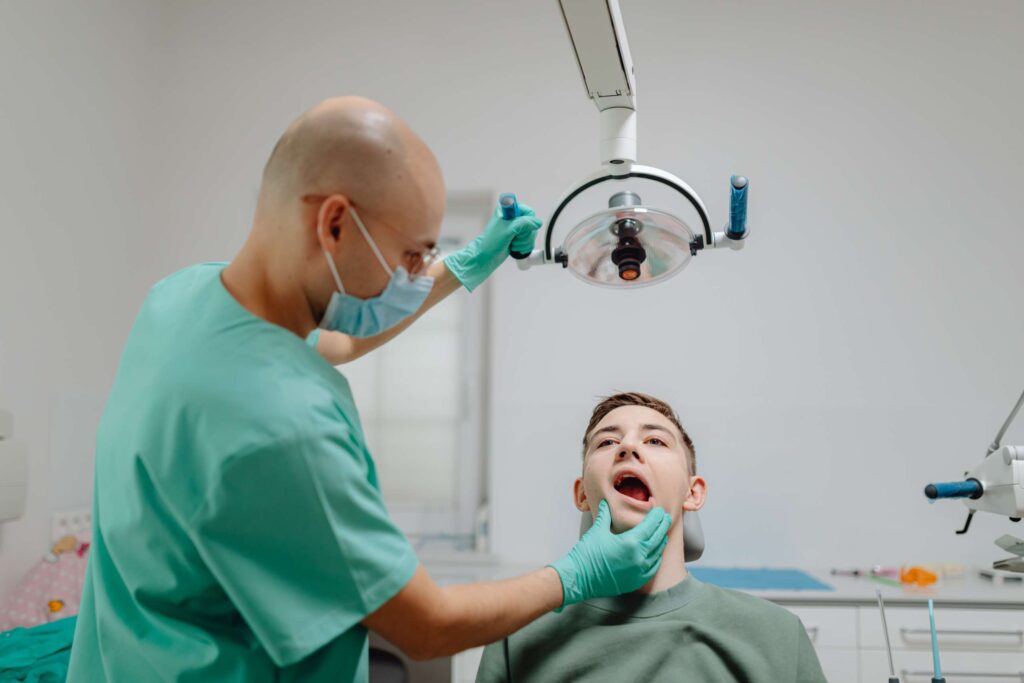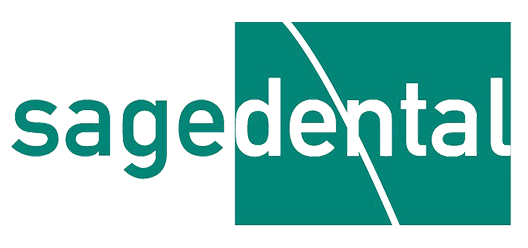What Are The Most Common Causes Of TMJ Disorders?
Conditions affecting the jaw joints, as well as the surrounding muscles and ligaments, are known as temporomandibular joint (TMJ) disorders. Both sides of your face, and directly in front of your ears, are where your temporomandibular joints are located. These joints, which are made up of the mandible (the lower jaw) and the temporal bone (the side and base of the skull), move and rotate in front of each ear.
They are considered to be one of the body’s most complex joints. Your lower jawbone and skull are connected by the TMJs, which facilitate and permit the jaw’s up-and-down and side-to-side movements. Some of these movements include chewing, speaking, yawning, and swallowing.

What is a TMD?
Temporomandibular joint disorder is referred to as TMD. Any TMJ problems are referred to this. The terms TMJ and TMD are frequently used interchangeably. When the muscles and ligaments surrounding your jaw joints experience inflammation or irritation, TMJ disorder develops. Several issues could arise if these structures are not coordinated in their movement or in alignment.
A patient may be diagnosed with a TMJ disorder if they experience frequent discomfort, swelling, stiffness, or popping. Pain from the illness could be mild or severe, and it could be acute or chronic.
TMD is categorized by the following criteria by the National Institute of Dental and Craniofacial Research:
- Myofascial pain – This is considered to be one of the most common type of TMD. The fascia (connective tissue covering the muscles) and muscles that control the function of the jaw, neck, and shoulder experience discomfort or pain as a result.
- Internal joint dislocation – This refers to a misaligned jaw, misplaced disk, or condyle injury (the rounded end of the jaw bone that articulates with the temporal skull bone).
- Degenerative joint disease – The jaw joint may be suffering from rheumatoid or osteoarthritis.
A dental expert’s evaluation is necessary for a precise diagnosis.
Common Causes of TMJ Disorders
It may not always be possible to determine the exact cause of this condition. An injury to the jaw joints or the tissues around may result in TMJ dysfunction. Age, gender (women seem to be more susceptible to it), and genetics all have an influence on TMJ disorders. Other causes of TMJ disorders include:
- Bruxism – an uncontrollable, habitual teeth grinding or clenching that exerts a lot of strain on the joint.
- Trauma to the jaw, head, or neck
- Disc displacement between the ball and socket joint
- Arthritis in the joint – Rheumatoid arthritis, which causes persistent joint inflammation, is a prevalent condition for TMJs and is a major contributor to TMJ disorder.
- Excessive stress – can cause you to clench your teeth or tense your jaw and face muscles.
- Fibromyalgia – a condition marked by extensive musculoskeletal discomfort along with sleep, fatigue, memory, and mood problems.
- Misaligned bite – Your jaw muscles may become strained as a result of the misalignment as they work to realign your jaw whenever you bite and chew. Your jaw joints and muscles may become worn out or damaged as a result.
Common Symptoms of TMJ
It is also significant to note that clicking or popping sounds in the TMJs without any associated pain are frequent and often accepted as normal. People between the ages of 20 and 40 are most likely to suffer from TMJ disorder. Women also experience it more frequently than men do. The following are some of the most common TMJ symptoms:
- Pain or discomfort in the jaw
- Headaches
- Ear pain
- Spreading pain in the face, shoulder, or neck.
- Having trouble opening the mouth wide
- Limited movement or locking of the jaw
- When opening or closing the mouth, there is a painful clicking, popping, or grating in the jaw joint
- Face having a tired feeling
- Chewing is painful and difficult
- Hearing loss, tinnitus, ringing in the ears, or dizziness
- Changes in the alignment of your upper and lower teeth.
- Swelling on the side of your face.
- Toothache
How Is TMD Diagnosed?
The symptoms of many other medical conditions, such as tooth decay, sinus issues, arthritis, or gum disease, are comparable to those of TMJ disorders. The dentist will ask you questions about your medical history and perform a physical examination to determine what is causing your condition. Majority of the time, TMJ disorder is identified during a dental examination.
They will listen for clicks, pops, or grating sounds when you move your jaw joints and examine for any pain or tenderness. They’ll also check to see if your jaw moves freely and does not lock when you open or close it. Additionally, they will assess your bite and look for any facial muscle issues.
In order to rule out other issues, your dentist might take complete face X-rays so they can examine your teeth, temporomandibular joints, and jaws. Other tests, such as computer tomography (CT) or magnetic resonance imaging (MRI), might be required as well. When your jaw moves, the MRI can demonstrate whether the TMJ disc is positioned correctly. The bone details of the joint can be seen on a CT scan.
For additional care and treatment, a specialist may be referred to you. Treatment of skeletal conditions like TMJ disorder is the area of expertise of an oral maxillofacial surgeon. To make sure that your teeth, muscles, and joints function as they should, you might also be referred to an orthodontist.
Treatments for TMJ
Simple self-care treatments and conservative therapies to injections and open surgery are all forms of treatment for TMJ disorder. The majority of medical professionals consider that conservative and non-surgical treatments should be performed first, with surgery being the very last option.
Non-Surgical TMJ Treatments
Your doctor will likely first suggest conservative treatment options if you have been diagnosed with TMJ disorder. Simple treatment may be sufficient enough because many jaw joint and muscle issues are temporary and do not develop.
To relieve TMJ pain, many of these treatments can be used in conjunction with one another:
Apply heat or cold to the face in combination with exercises
For immediate pain relief, place an ice pack on your side of the face and around your temples for about 10 minutes. Follow your doctor’s advice and perform a few basic jaw stretches. Apply a warm washcloth or towel to the side of your face for about five minutes after doing the exercise. Repeat this several times every day.
Consume soft foods
Eat soft meals like yogurt, mashed potatoes, cottage cheese, soup, scrambled eggs, fish, cooked fruits and vegetables, beans, and grains to prevent your jaw from having to work extra hard and being strained. Avoid foods that are hard, crunchy, or chewy, such as hard rolls, pretzels, raw carrots, taffy, and caramels. You should also avoid chewing gum.
Take over-the-counter medications
Try over-the-counter nonsteroidal anti-inflammatory medicines (NSAIDs), such as aspirin, ibuprofen, or naproxen, to reduce discomfort and swelling. Higher NSAID doses or other painkillers, such narcotic analgesics, may be prescribed by your doctor.
The tight jaw muscles can be relaxed with the aid of muscle relaxants, especially for those who grind or clench their teeth.
Anti-anxiety medications can aid in reducing stress, which is occasionally believed to intensify TMJ symptoms. Antidepressants taken at low doses can also help regulate or lessen pain. Only those with a prescription can obtain muscle relaxants, anti-anxiety, and antidepressants medications.
Putting on a night guard or splint
Mouthpieces that fit over your upper or lower teeth are called splints and night guards. The mouthpieces give secure teeth contact during closure when worn. Mouth guards, when worn, also improve your bite by shifting your jaw into a more optimal position.
The primary distinction between splints and night guards is that the former are worn continuously while the latter are only worn at night. The kind of oral appliance you might require can be determined by your doctor.
Receive corrective dental treatments
Other things to note:
- Limit your chewing and yawning.
- Avoid holding the phone between your shoulder and ear or resting your chin on your hand. Reduce neck and facial pain by maintaining excellent posture.
- To reduce pressure on the jaw, try to keep your teeth gently spaced apart as much as possible. Placing your tongue on the palate behind your upper front teeth will help you stop clenching or grinding during the day.
- The best way to manage jaw tension is to learn relaxation techniques.
Other Non-Surgical TMJ Treatments
Your doctor might recommend one or more of the following if conservative measures don’t work:
Transcutaneous electrical nerve stimulation (TENS)
Low-level electrical currents are used in this therapy to relieve discomfort by relaxing your jaw joint and facial muscles. TENS treatments can be carried out at home or in your doctor’s office.
Ultrasound
The TMJ receives this deep heat treatment to reduce pain or enhance joint mobility.
Trigger-point injections
In order to ease discomfort, anesthetic or pain medications are injected into the “trigger points” of the face’s muscles.
Radio wave therapy
The joint is electrically stimulated by low-level radio waves, which improves blood flow and relieves TMJ pain.
Botulinum Toxin (BOTOX®)
These BOTOX® injections assist in reducing inflammation and muscle mass.
Surgical TMJ Treatments
Only after trying all other forms of treatments should TMJ surgery be considered. The best option for many patients is TMJ surgery, but it’s important to consider all of your alternatives and make a well-informed choice.
Arthrocentesis, arthroscopy, and open joint surgery are the three different types of TMJ surgery. The complexity of the issue and the TMJ symptoms determine the type of surgery that is required.
Arthrocentesis
In the doctor’s office, a local anesthetic is typically used to execute this minor treatment. It is frequently advised when the jaw unexpectedly locks in the closed position. Additionally, it may lessen TMJ inflammation.
The afflicted joint is cleaned out by having needles stuffed with sterile fluids injected into it. A surgical tool may occasionally be required to remove scar tissue or to move a misaligned disc.
Arthroscopy
The patient is given general anesthesia for this procedure. A tiny, thin device with a lens and light is inserted by your surgeon after he makes a small incision in front of the ear. The TMJ and surrounding area can be examined by your surgeon using this tool, which is connected to a video screen.
Your surgeon may remove inflamed tissue, realign the disc, or operate on another part of your TMJ depending on the source of your pain.
In comparison to open joint surgery, arthroscopic surgery leaves less scars, requires less time to recover from, causes less discomfort, and has fewer complications.
Open-joint surgery
General anesthesia will be administered if open joint surgery is required. Open surgery, as opposed to arthroscopy, is a more conventional method that involves making a lengthy incision to insert instruments. Open-joint procedures might be required if:
- The jaw joint’s bone supporting structures are deteriorating.
- TMJ or the area around it has tumors.
- The joint has extensive bone chipping or scarring.
Open joint surgery takes longer to heal than arthrocentesis and arthroscopy, and it increases the risk of tissue scarring and nerve damage. Open-joint surgery is still the best option in some situations. Your doctor can assist you in deciding which strategy is best for your condition.
Alternative TMJ Treatments
Many medical professionals advise combining alternative therapy with conventional treatments. These therapies could consist of:
Techniques for relaxation
You can slow down your breathing and loosen tense muscles by practicing mindfulness or meditation. As a result, pain may be lessened.
Acupuncture
Thin needles are inserted into the body at different points during this procedure. The central nervous system may be activated by acupressure points, which promotes your body’s natural healing processes.
Biofeedback
Your body’s tension and stress points can be located with electronic devices. This helps you become more aware of the muscles that are tense so that you can concentrate on relaxing them.
Pain management referrals
To assist you with managing your symptoms, you might be recommended to a pain management clinic or pain psychologist.
How can I reduce my risk for TMJ disorder?
Certain TMJ problems are brought on by external causes that you have no control of. But in some circumstances, you might be able to lower your risk of TMJ problems by:
- Maintaining proper posture.
- Use of a night guard, particularly if you grind or clench your teeth.
- Using mouth guard when playing contact sports.
- Using techniques for relaxation and stress reduction
When should I seek treatment for TMJ disorder?
Make an appointment with your healthcare provider as soon as possible if you suffer common TMD symptoms such as jaw pain, trouble opening your mouth, or popping and clicking of the jaw.
If you clench or grind your teeth, you should also make an appointment because this can result in TMJ disorder.
YOUR DENTIST FOR TMJ IN WALL TOWNSHIP, NEW JERSEY!

Are you worried about having TMJ disorders and looking for a dentist to check on you near Wall Township?
Visit Dr. Avi Israeli of Sage Dental and Spa to get your dental cleaning, check-ups, or any dental related procedures that you need.
Call us to book a consultation today!
References:
https://my.clevelandclinic.org/health/diseases/15066-temporomandibular-disorders-tmd-overview
https://www.hopkinsmedicine.org/health/conditions-and-diseases/temporomandibular-disorder-tmd
https://www.nidcr.nih.gov/health-info/tmd
https://www.webmd.com/oral-health/guide/temporomandibular-disorders-tmd
https://www.cedars-sinai.org/health-library/diseases-and-conditions/t/temporomandibular-disorders-tmd.html


